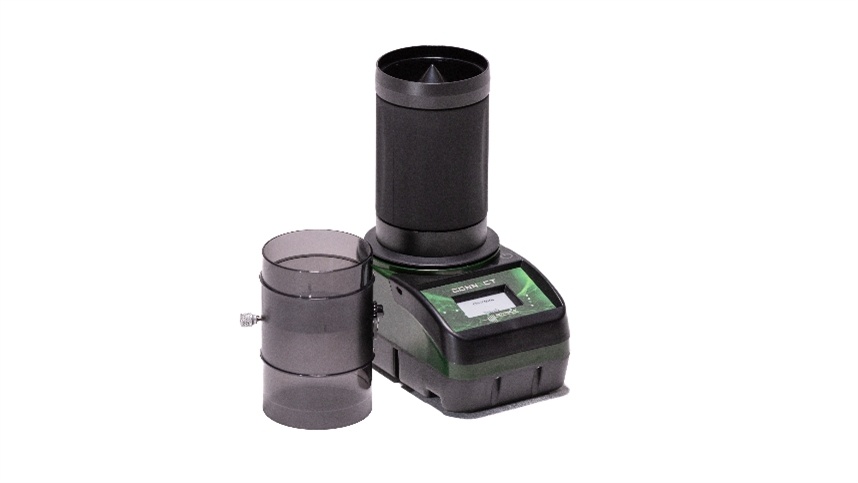After prolonged drought, a rural producer took advantage of soil moisture to plant soybeans
Recent weather conditions, marked by moderate rainfall, have favored the advancement of the first corn and soybean crop planting in Paraná for the 2024/25 season. The progress has been especially noticeable in corn cultivation, while soybean planting still faces challenges due to irregular rainfall. With the continuation of spring rains, planting is expected to intensify across Brazil.
According to data from the Department of Rural Economy (Deral) of the Paraná Secretariat of Agriculture, about 30% of the area allocated for corn has already been sown, out of a total of 267.7 thousand hectares. The estimated production for corn in the state is 2.703 million tons. Currently, corn plants are in the germination and vegetative development stages.
The situation with soybeans presents a slightly more cautious scenario. September began with periods of drought, delaying the start of planting in several regions. However, recent rains, although insufficient in some areas, have already allowed isolated planting efforts to begin. So far, approximately 1% of the area in Paraná, which covers 5.8 million hectares, has been planted. Projections indicate a production of 22.3 million tons of soybeans in the state. Nationally, soybean planting is progressing at a slower pace.
The family of rural producer Suelen Pontelo Gasparotto, from the Cascavel region (PR), who grows soybeans and corn in Paraná and Mato Grosso, took advantage of the recent moisture to intensify soybean planting in Paraná. “We’ve come from a prolonged drought in various regions of the country. In Paraná, last week’s rain was very helpful for planting. Therefore, the weather will be a determining factor for the continuity of sowing and, consequently, the success of the harvest,” explains the producer.
In Paraná, Suelen points out that the rains are helping plant development. “There’s a forecast for a dry spell between January 15 and February 15, but since we’ll be harvesting soybeans during that period, it shouldn’t affect us. In Mato Grosso, however, we’ll need to pay more attention since the harvest there takes a little longer,” she says. In addition to weather issues, the producer also highlights the importance of logistics and technology for the success of the harvest. She mentions the use of precise equipment to measure grain moisture, ensuring better control at harvest time. “The moisture meter brings greater transparency to the grain marketing process. If the moisture discount is higher at one cooperative, we can choose to deliver elsewhere. Having a moisture meter regulated by Inmetro is a key factor for achieving greater profitability,” Suelen emphasizes, highlighting the importance of resilience and adapting to constant climate changes in the field.
Another important point to highlight concerns harvesting. To ensure the quality of soybean cultivation, for example, it is recommended to harvest when the seeds reach a moisture level compatible with mechanical threshing, between 13% and 15%. This range is relatively safe for minimizing mechanical damage to the grains during harvest. Damage increases when the moisture content is above 18% or below 13%.
The same applies to corn, which can be harvested with a moisture content between 16% and 18%. In this case, the grains need to undergo an artificial drying process if harvested with moisture levels higher than that, until they reach 14% moisture for storage.
One thing is certain: the larger the volume of grains, the more efficient the harvest and storage planning must be, says Fernanda Rodrigues da Silva, relationship manager at Loc Solution, the company that owns the Motomco brand, specializing in grain moisture meters.
Grain moisture meters are a technology that has been helping many producers determine the right time to harvest, as well as cooperatives and trading companies to market grains with greater safety. “The equipment provides real-time moisture measurement results, allowing for greater accuracy and traceability from harvest to grain storage,” says Fernanda. “That’s why it’s essential to monitor moisture in all crop areas. The devices have advanced technology, offering ease of use and precision in results,” she adds.
Loc Solution – Loc Solution, based in Curitiba, owns the Motomco brand of grain moisture meters. The company manufactures, sells, and leases the equipment and is a reference in various agricultural regions of the country. Originally from Canada, Motomco is the national leader in the grain moisture meter segment. More information can be found at motomco.com.br.
 Paraguai
Paraguai





